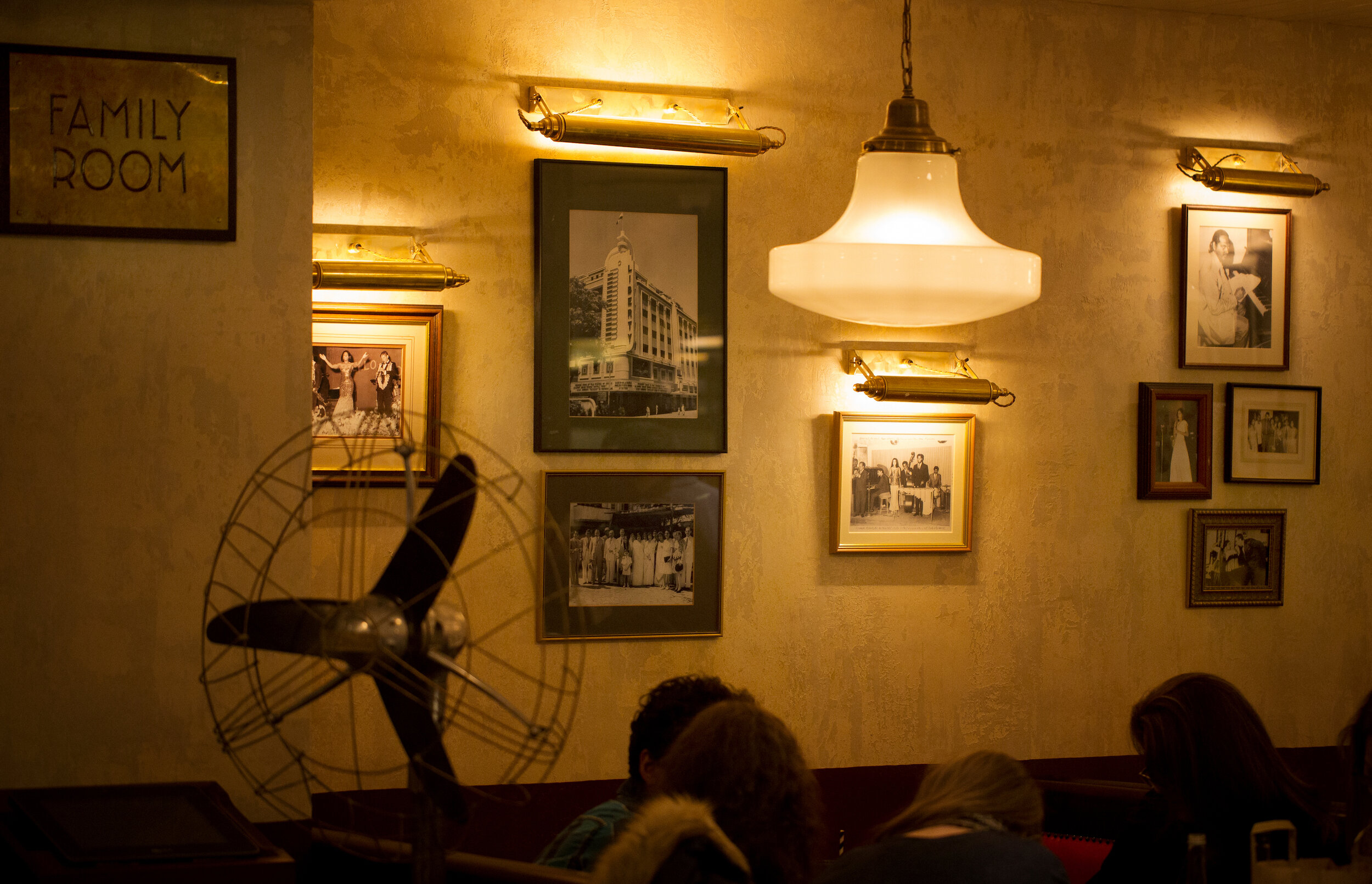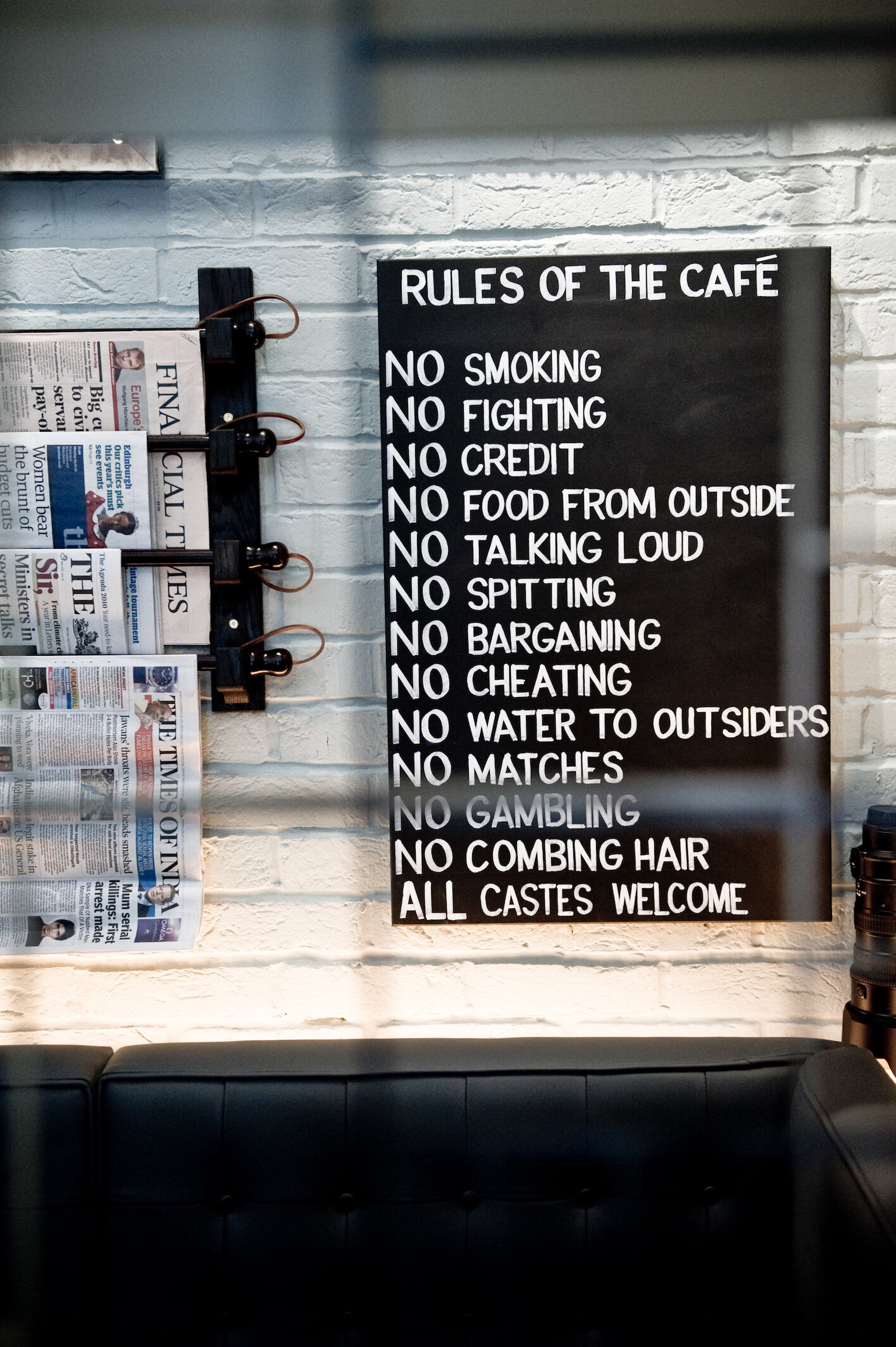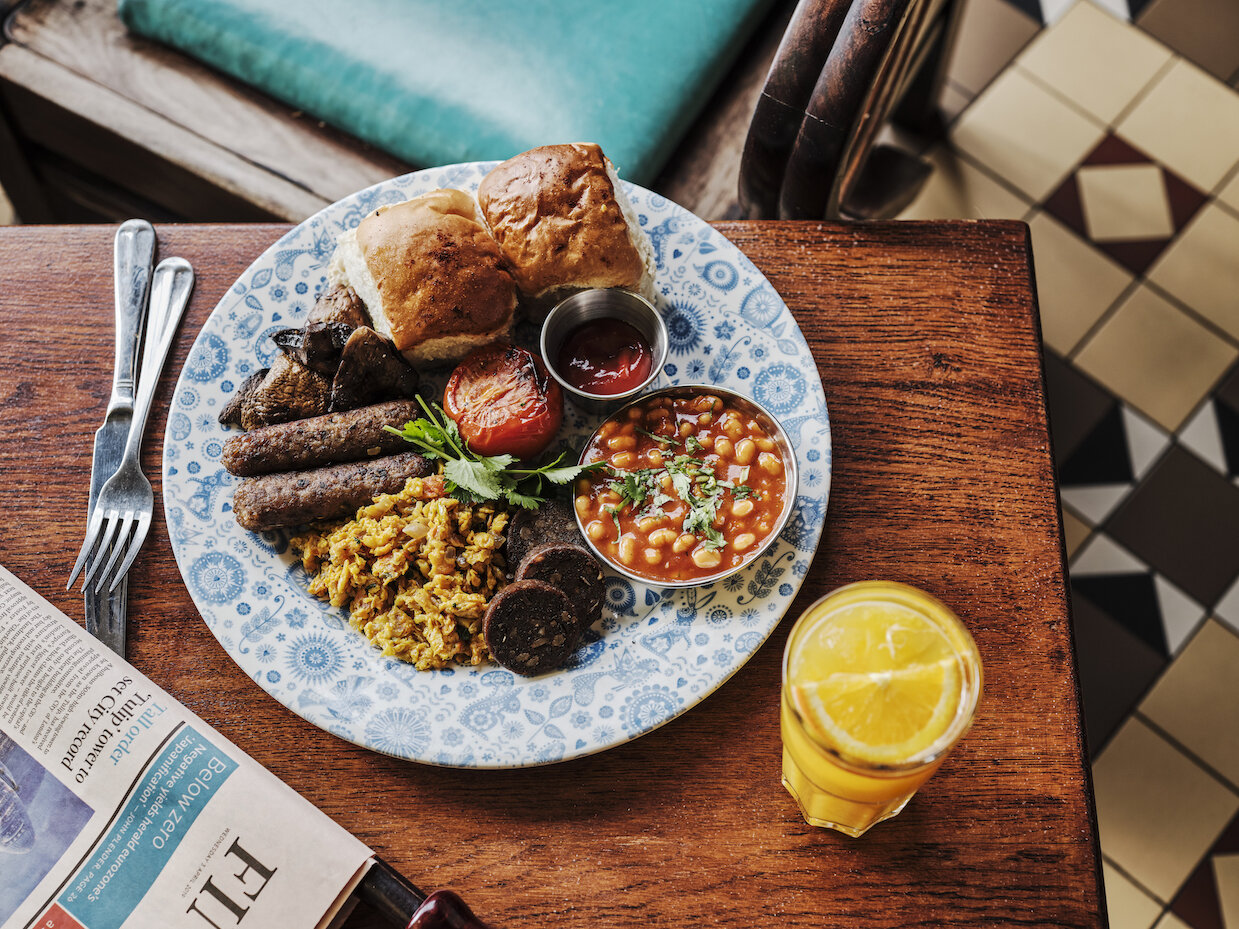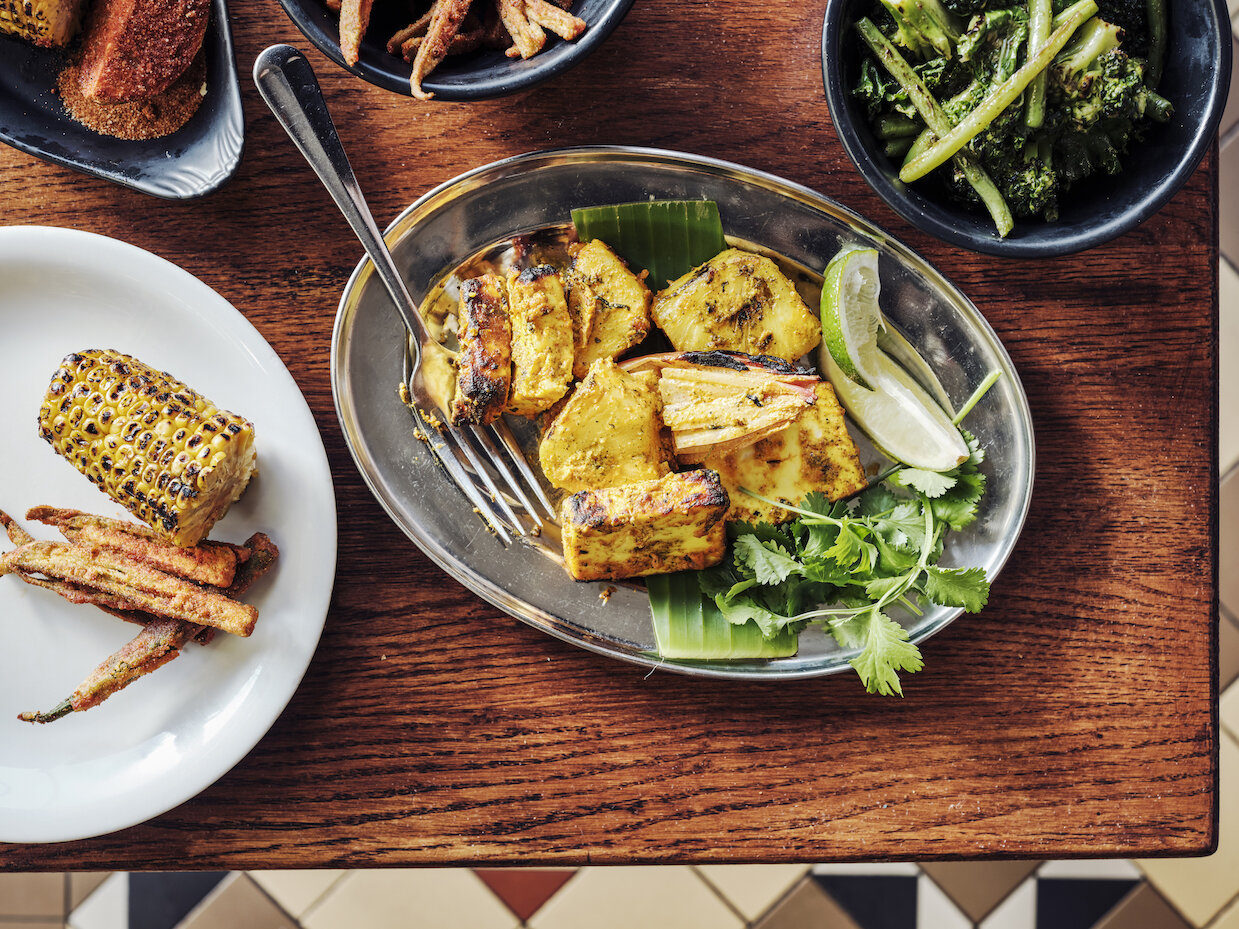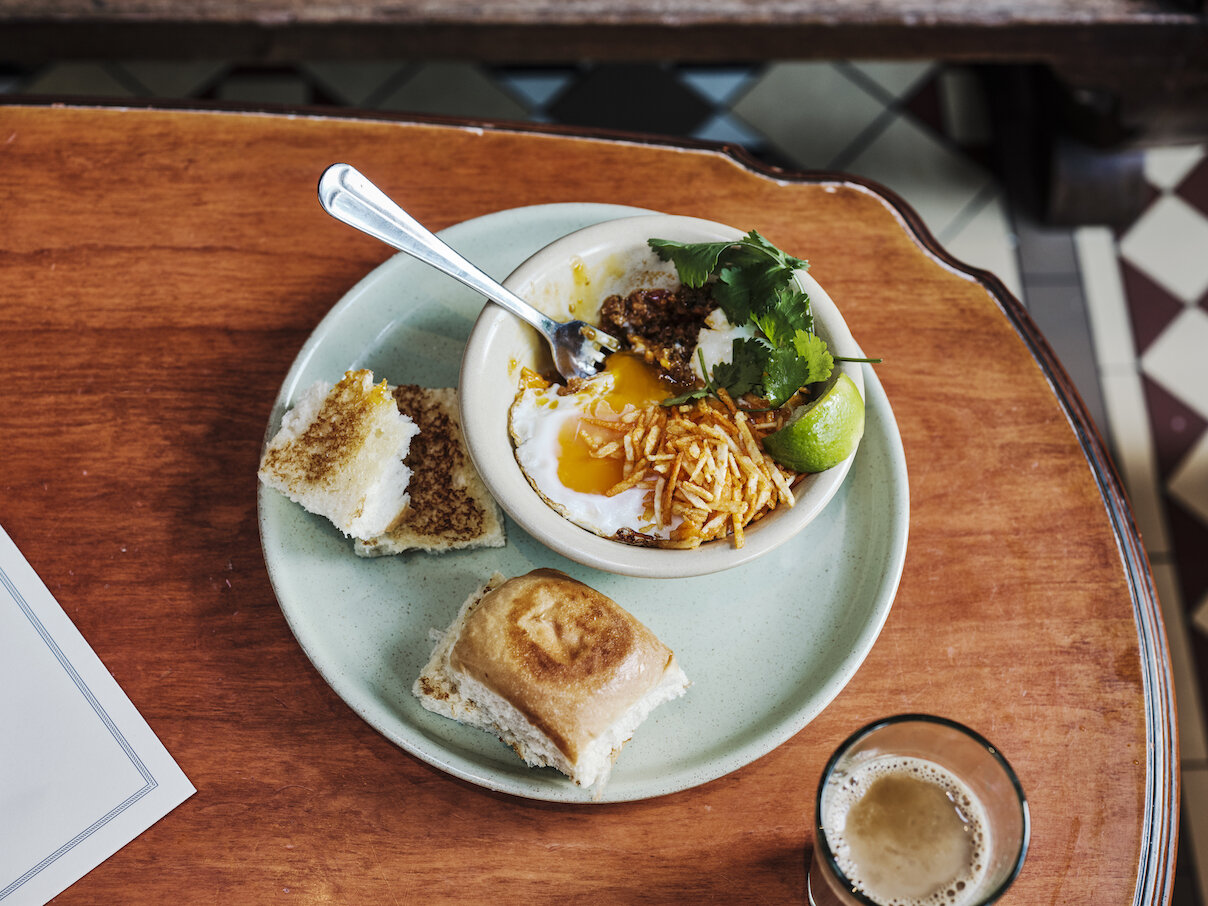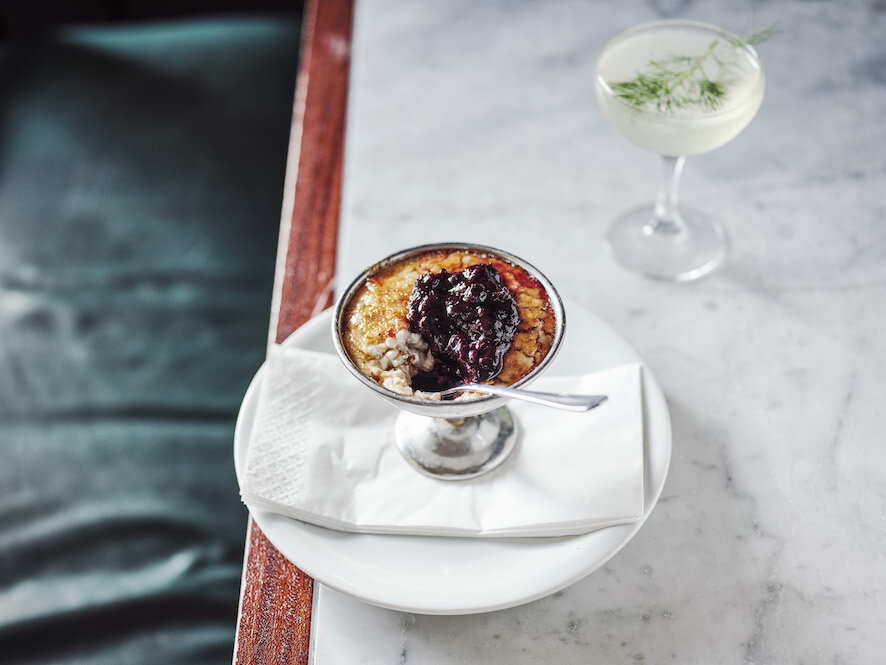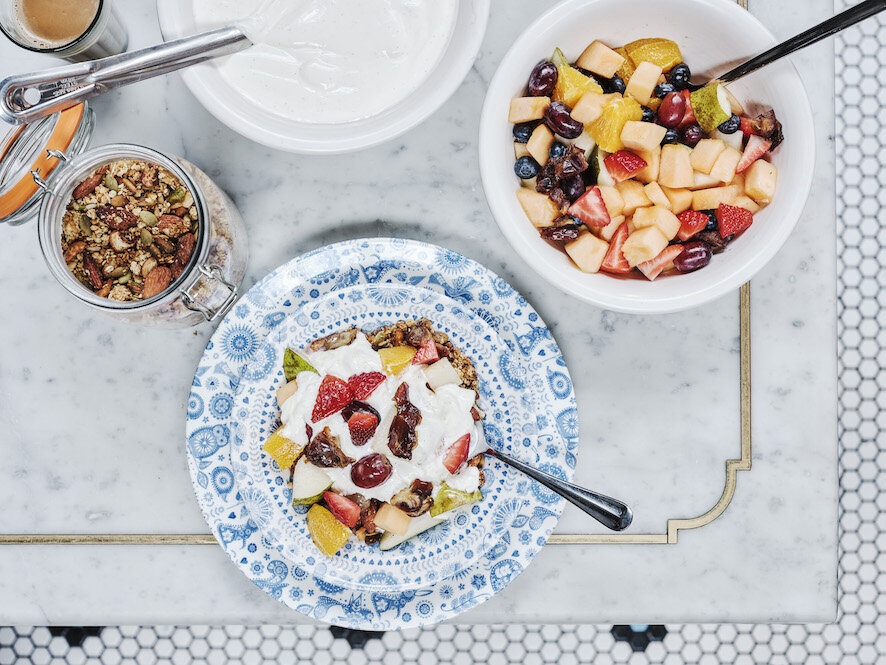Conversation with Shamil Thakrar of Dishoom
Dishoom, a popular chain of restaurants in England, goes by the tag line, ‘From Bombay with Love’. Founded by Shamil Thakrar with his cousin, Kavi, in 2010, Dishoom recreates the experience and nostalgia of Bombay’s old Irani cafes that flourished in the 60s. Today, there are seven Dishoom cafes running in the UK.
“And I love doing this not only for the guests, but also for our team. I think that it’s really, really important to enhance each life that we touch. And we do it, whether it’s the guest or a team member, through design and through experiences, through food and drink and service, through the fact that we employ people in a way that is better positioned than “just another job”. ”
S: Why did you think Dishoom was needed? What gap did you perceive in the Indian food scene in England? Elsewhere, in other interviews, you've mentioned that India and England have had a history together -- that there was already almost a set language underneath. What did you think was missing in this particular context?
I: Before we opened Dishoom, I had a feeling that Indian culture wasn’t well-represented in the UK. We had excellent Michelin-starred Indian restaurants and a great tradition of curry houses, but the existing cultural language didn’t quite express the India we knew and loved. When people in the UK thought of India, they usually thought in terms of Bollywood, the days of the Raj, cricket, the Taj Mahal, or the Maharajas. I felt that there was so much more to say in terms of food, culture and design.
The design of our spaces is one of the ways in which we have tried to refresh this language. It’s possible to summon up India very quickly actually; you could ask a designer, “Give me India”, and they could give you a series of clichés in no time. Even though these may be true, at least in part, they may not be representative. Personally, I think that language lands a lot better if it is different, distinct. With Dishoom, we have tried to avoid the tired old clichés and give our guests a different experience of Indian culture -- one which connects directly with our experience of Bombay.
Talking of design, over time I had really started to feel that there was a way to use design as a story. Maybe I'm giving away a secret here, but I think that the designer's way of telling a story can really make the difference between something that is “themed“, and something that truly feels authentic. For instance, we’re not an Irani café; what we are doing is paying loving and detailed homage to Irani heritage and their way of life. Using a story allows you to do this -- it saves you from being hackneyed -- from the compulsion to roll out all kinds of tropes and clichés. And if you introduce a more complex narrative, then the quirks in the design give it personality. Because even when you meet somebody, they're not just one- dimensional. They're not monolithic. Are they? They're full of interesting quirks and surprises. Everyone is weird. And so, when you see an environment which is monolithic or very uniform, you know right away that that's not how it is. Life isn't like that. Compare this to what happens if you introduce a character with different aspects to her personality. Consider the protagonist we invented for our Carnaby restaurant. We gave him a taste in modern art. He really likes the Bombay Progressives; he really takes to a different kind of music. He reads Norman Mailer and likes to say that he’s had a rich life like Che Guevara. He’s a person who has gone on protests and written on walls. And he possesses this rich internal life, which then emerges -- which is unexpected! I think that trying to communicate in a way that isn't clichéd, and using story and narrative as a scaffolding for communicating design has made Dishoom what it is. It means that when you come into our environment, you experience something very, very different. You experience something unmistakably authentic.
S: Yeah, yeah, I completely agree. Everything you just said makes so much sense, because it feels like it was an authentic process to begin with. I'm keen on knowing more about your relationship with Indian culture and food while you were growing up. I mean, Gujarati cuisine can be so massive. Did that inform your first relationship with Indian food?
I: Yes, my relationship with Indian food started with Gujarati food. My family is vegetarian. We might eat meat out of home, but at home we're vegetarian. My relationship with the food at home was very clear -- that this is home food. It's what you grow up with, and you take it for granted.
I grew up here in London, but my grandparents used to take me to India all the time. I have been visiting India since the age of four, five, six. At that time, my grandfather was setting up a business in Punjab. It meant that we would travel the length and breadth of Punjab and go to all sorts of crazy places. This was back in 1978 - ‘79. I remember the political scene; I guess Indira Gandhi was around, as was the Emergency. I remember that we travelled to Kashmir, and also that we drove a car to Bombay. Basically, we went around the whole country. I have memories of staying all over, and especially a lot of memories of Bombay.
I was obsessed with Indian history and culture from about the age of 6 or 7. In retrospect, this is the first time I'm thinking about this. Maybe it’s a way to look back on who I was. India definitely felt like it was a part of me, in a way that wasn't true of the other kids at school in London. This affinity reflected in all kinds of things, for instance, in all the Amar Chitra Kathas I read. By the age of 7, I had 50 or 60 of them, and then somebody bought me a subscription. They used to be delivered here, and I ended up with about 600. I remember the time I had gone to a bookshop in Bombay. I had 20 missing from my collection at that time, and so I went through the whole bookshop and found them all. The bookshop guy was so impressed that he gave them all to 7-year-old me for my birthday. Of course, that love, that interest didn't go away.
I'm sure that Dishoom is also a way to express this relationship. I’ve always felt dissatisfied with the UK’s expression of Indian culture. I didn't relate to it. But when in India, I would be much more satisfied by my discovery or understanding of Indian culture. I even found people I could converse with, and could develop an understanding with. It would all come together.
S: That’s very interesting.
I: I guess I was always quite bookish. In India, I found other people who really, really loved reading Indian literature and learning about Indian history. You didn’t see it as much in London, obviously. At least when I was growing up, something was absent (maybe there's more now). I felt that the Indian culture that existed here wasn't as rich as Indian culture in India. And I wonder if Dishoom didn’t actually became my vehicle to express something of what I felt in this regard.
S: So you've travelled in India in the ‘70s, and I'm sure you go back now and then. Do you feel like there's a big difference in the way people are doing design and culture nowadays? I mean, there's a huge F&B boom in India right now, and almost this trend of travel-meets-design. Everybody wants a little culture business, you know, and new concepts are being brought in. What are your thoughts about that? And when you go back to India now, does it speak to you in the same way that it inspired you in the ‘70s?
I: I think I look at everything with rose-tinted glasses. I think that in this case, because I was a child, my experience of India in the ‘70s was great. However, things have clearly really opened up and become much more international. I enjoy the contrast. I still really love the romance of South Bombay -- it's the only place in the world that feels like South Bombay. When you wander around, you feel its own real unique character. For instance, there are rent controls and the market’s inefficient, yet Britannia restaurant is still there. Spaces like that still exist. It makes no sense; it’s kind of magical.
S: I think what you said is so apt. I feel the same way. I actually go to Bombay a lot because I have clients there. Every time I go, I make sure that I’m in town because I think it adds so much value even to my walk. You know, it inspires me -- the little things that you pick up on the streets and -- like you pointed out -- the businesses that have survived. I think it's so charming.
My next question to you is this. Presently there is this kind of marriage of traditional and contemporary and everything, you know, even in fashion and textiles. People are looking at all these traditional craft techniques, modernizing them, and making all of it relevant to today's language. In Dishoom, you don't feel out of place because it's not too traditional. It's very interestingly done. I'm very interested in knowing about your design process, because even though there is a very set design language to all your restaurants, I can see different characters. There's a different feel to each. How do you make this happen?
I: Each restaurant feels different because at the core of the design process is a story. For each restaurant we write a founding myth, each set in a slightly different time period, each with a fully-formed protagonist with their own human interests and eccentricities. This story informs all the aspects of the design narrative.
Sometimes we take the story further, off the page -- off the walls -- if you will. For instance, with Kensington, the story inspired an immersive theatre production. We worked with Punch Drunk, the immersive theatre company, to conceptualize and create the narrative. We wrote original music for it, including some new jazz. People don't think of India in terms of jazz or deco, but I love representing culture in that way. I think what we serve tastes different in different places because the contextualization is different.
S: I think what's really exciting is how you're so involved in everything, you know. Are you doing something interesting for the Covent Garden opening?
I: Covent Garden is the only restaurant that doesn’t have a founding myth. We hadn’t invented the process back in 2010. We’re in the process of writing that founding myth ahead of the redesign next year.
S: I think your audience totally gets it.
I: I don't think it necessarily matters if people understand everything that we do. I think some things are experienced in a subliminal way.
S: It’s great that you appreciate design and detail to this extent, even though you haven't formally studied it. So we already touched a little bit upon how you were growing up in London, and though you couldn't really relate to the Indian culture here, you were really excited about ‘actual’ Indian culture. But what do you think is the identity today? The common denominator of all the people I've interviewed is that they are all basically creative thinkers. They're all cultural business owners, and people of mixed identities. I think that they bring so much texture to what they do, because they take these cues from -- you know -- everywhere. I also met Gautam Sinha of Nappa Dori. Do you know him?
I: I do, yeah.
S: They must be just about two steps away from Dishoom in Covent Garden. He too is someone who’s super passionate and goes into the smallest detail. He has chai in his shop. And I have to admit that it's one of the best chais I’ve had! I can see the commonalities in people like you getting excited about so many different little elements of culture. What do you think is happening in London? People suddenly have so many cool ideas. Do you think we are part of some art movement, or some kind of design period?
I: I don't know how it coincides with political or economic cycles, but it certainly is true that there has been a flourishing. I mean, my knowledge is mostly to do with the restaurant scene, but even in general, I think that the word for it is ‘flourish’. I think that culturally, London is one of the richest places in the world. And I think that won't change, even with Brexit.
S: I hope so.
I:For me, growing up in London, I was an outsider to India. I’ve only lived there in periods of not for more than six months at a time. But I think that has meant that I’m able to see things with a perspective different from that of a typical Londoner, or an Indian. You will find me walking around, just looking at these brilliant, amazing textures of architecture, which you don't appreciate as much if you're there everyday. I think it takes an outsider to appreciate that.
S: Yeah, I think I can appreciate it only because I spent time here. And, most of these different cool and creative things that are happening in India right now have been started by people who have lived abroad and have come back and collaborated.
I: I think what also really excites me is finding those unexpected cultural connections. I love jazz. I really, really love jazz. I love art deco. So, seeing that jazz and art deco exist in Bombay and that there's a story to be explored and told is very exciting, and it really allows me to relate.
S: So even now, does Bombay inspire you as much, or have you discovered other places in India?
I: No, no, Bombay is endlessly fertile. I mean, it's a big city, and we keep finding more and more stuff all the time. At the moment we're working on the transition from and overlaps between Parsi theatre and the early talkies. There was a little period where you had very rich theatre -- the early Bombay Talkies and black and white films. It was a nice little period. I’ve been thinking about it quite a lot. I think there are lots to be explored still.
S: So what’s next, apart from Covent Garden? Where is Dishoom heading to in the next five years?
I: Slow is the word. Anything we do will be slow, because our approach is very time consuming and it has to have conceptual integrity. We have to take time to create an environment that people love to be in, even though they may not notice it, or be conscious of why they love it.
S: I agree. And good design is when it's subtle – when it isn’t screaming something.
Okay, so, out of everything that it takes to run Dishoom, what excites you the most? Is it the design? Is it the food, or the business side of things? What is it that is really your passion?
I: I think you've got to love it all, because creating and running a restaurant is such an integrated process. However, I think I love two things the most. I really love making my guests happy. I so love seeing the smiles on people's faces. I walk around the restaurant and observe. Imagine that it’s a Thursday night. There's a queue outside. I walk in, I see the food runners, I see a guy doing a romali roti routine. There’s a grill sizzling. And the music’s just right. Everyone's smiling and drinking and eating and just loving it. This makes me very happy.
And I love doing this not only for the guests, but also for our team. I think that it's really, really important to enhance each life that we touch. And we do it, whether it's the guest or a team member, through design and through experiences, through food and drink and service, through the fact that we employ people in a way that is better positioned than “just another job”. This should be a better job. This should help people to be bigger and better, to learn more, and be paid well for it. That really is important to me.
S: I think you've done a good job at that, because as soon as I walk into this office, I sense such good energy. I see happy people. I was greeted by two very happy employees -- I could sense it in them. I think good companies have that. I've had a chance to work with five different companies, and my experience has been that the companies that have happy employees are the most successful.
Also, the way that you described the whole thing, I could just imagine it in my head like it was a movie. I agree that Dishoom totally has that vibe. And I have to tell you, there's this “Kala Khatta” drink that you have in the restaurant, and I asked the woman to make it extra spicy for me. And she did. It was actually extra spicy! I really liked how she could pay attention to this little detail, despite being so busy.
I was actually very excited to see Kala Khatta. Every time I have friends over in Delhi, I make them try that Coke masala thing. It may not sit very well with the British palate, and the fact that you still have it on the menu is really exciting!
I: They do hate it!
S: It's such an Indian thing! I absolutely love it!
Now for two interesting questions that I personally am really interested in. The first is, how do you manage to bring all these old objects to London?
I: Oh, we hunt everywhere and find stuff. Macaulay Sinclair has been our long-term design partner, and they accompany us to Bombay regularly. We’re also blessed to have some great friends in Bombay who help us hunt out the perfect pieces.
S: Is it all from Bombay?
I: Many objects are. Once we've written the story of the restaurant, we spend four or five days on the ground looking at the relevant architecture in Bombay. Then we design it, and again go back for sourcing, ensuring that the furniture fits with the design period. For example, in Kensington, much of the furniture is from the ‘40s and the ‘50s, because art deco came later to Bombay than to New York or London (by that time, London and New York were already more mid-century).
S: Okay, exciting. Very exciting. And what about the book? Is it more like a personal passion project? Are there more to come? Are there other interesting projects in the pipeline?
I: The book really tells you everything - it's half travelogue, half recipe book. We call it a love letter to Bombay. It’s our attempt to capture all that we love most about the city.
It’s a highly subjective guide, a slice of our Bombay. We cover everything from the cotton bubble of the 1860s, to jazz and deco and the Irani cafés. The whole thing is so layered. It meant a lot to have the space to do that, because I think that culture and food need to be experienced together.
We also made a dedicated trip to Bombay with our photographers -- to show them our Bombay.
Let’s say that you're consuming a plate of pau bhaji in London. It’s great, but if it’s chopped off from its roots, divorced from its original context, it won’t taste the same. I think you need to re-establish that cultural connection and this book is an attempt to do that for Dishoom.
S: When you go to Bombay, what's that first thing that you want to eat? I’m curious.
I: Probably bun maska at an Irani café.
S: How about chaat, like sev puri?
I: In Bombay, yes. There’s no place like Chowpatty beach during sunset. It's a cliché maybe, but the sunset there is always beautiful. It’s charming. It never changes.
S: Do you eat at your restaurants very often?
I: Oh yes, I'm here a lot.
S: What's your favorite thing on the menu now?
I: It has to be Chef Naved’s House Black Daal.
Also, one last thing. I didn’t get a chance to tell you why I think what we discussed is really important. The heritage of Irani cafes is about bringing people together – people of different backgrounds, faiths and persuasions. At Dishoom, there’s nothing more important than breaking down barriers. We celebrate Diwali, Eid, and Christmas. We bring together all the faiths to share an iftar meal during Ramadan, all with the aim of bringing people together over food and drink. In 2015, we introduced a ‘meal for a meal’ initiative; for every meal sold, we donate a meal to our charity partners in India and the UK. We have donated over seven million meals so far. At this moment in the world, there’s clearly a bit of resentment in the air, and I think we have to make sure that tolerance for each other does not remain at that level, but becomes a celebration of each other. Our society is a mix. London's mixed, Bombay's a mix. We have to get on with each other. And I think that the only way to do that is not just to say, “Ok, I'm going to put up with you.” It's to say, “Hey, I value you.” We have to change. Otherwise we can't prevent people from exploiting our differences.
S: I'm really glad you said that. Like you said, we are in a place where we really need to appreciate diversity and embrace it. And I agree that food is one of those things that can genuinely bring people together. I also think that you are doing it very well. All my friends here love Dishoom. They love it. They're not Indian, and they go for your Sunday breakfast all the time!
I: Thank you!
S: No, thank you!


